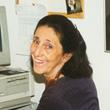Music Director, 1905–1942
Frederick Stock
William L. Koehne
To find the right person to follow in the goliath footsteps of Theodore Thomas, the trustees embarked upon a worldwide search. While they searched, the Orchestra was entrusted to its assistant conductor, 33-year-old violist Frederick Stock. Thomas had brought Stock to Chicago from Germany, initially to strengthen the Orchestra’s viola section. The young musician very early demonstrated additional talents and Thomas lost no time in appointing him his assistant in 1899. After Thomas’s unexpected death in 1905, Stock so competently stepped into the breach that it did not take long for the trustees to realize that he was the man they were looking for, the rightful heir to the Thomas legacy in Chicago.
The Orchestra began performing at Ravinia Park in November 1905 during the park’s second season and appeared there semiregularly through August 1931, after which the park fell dark under the Great Depression. The Orchestra helped to inaugurate the first season of the Ravinia Festival in August 1936.
Frederick Stock and the Orchestra onstage in February 1907.
George R. Lawrence
This photo of Orchestra Hall (ca. 1909) reveals entrance doors covered by an electric-bulb lighted canopy and Michigan Avenue paved with bricks.
Since Orchestra Hall opened its doors, the venue has served as a multipurpose space, hosting a wide variety of events, including numerous billiard tournaments (above in 1908) and movie screenings (below, Fannie Hurst’s Humoresque of 1920).
George R. Lawrence
The Chicago Symphony Orchestra made its first recording on May 1, 1916 — Mendelssohn’s Wedding March from A Midsummer Night’s Dream — for the Columbia Graphophone Company.
Stock conducted the Orchestra (augmented to nearly 150 players) in three performances of Gustav Mahler’s Symphony no. 8 (Symphony of a Thousand) in April 1917 at the Auditorium Theatre as part of the Chicago Music Festival. Over 600 adult choristers from seven choruses were engaged, along with nearly 200 boys from the Oak Park and River Forest grade and high schools.
In 1919 Stock founded the Civic Music Student Orchestra to provide apprenticeships for promising young American musicians. The ensemble made its debut on March 29, 1920, and the roster included several future CSO members, including Concertmaster John Weicher.
Frederick Stock inaugurated a regular series of Children’s Concerts during the 1919–20 season to introduce music to young Chicagoans, cultivating future concertgoers.
Frederick Stock led the Orchestra in numerous world and U.S. premieres, including Gustav Holst’s The Planets in December 1920.
To honor the memory of Chicago Symphony Orchestra founder Theodore Thomas, in 1924 a monument — entitled The Spirit of Music by sculptor Albin Polasek — was erected in the south garden of the Art Institute, facing Orchestra Hall. The photo above shows early construction at the site, and the photo below shows the sculpture shortly after the installation.
The monument, here in its original location, was rededicated during the Orchestra’s centennial celebration and installed at a new Grant Park location, at Michigan and Balbo streets in the park’s music garden, where it stands today.
The Orchestra began recording for the Victor Talking Machine Company (later RCA Victor) in 1925; this photo was taken as Stock along with a Victor representative, Manager Frederick J. Wessels and Assistant Manager Henry Voegeli listened to a test pressing of one of those recordings in February 1926.
In this photo from 1930, it is not clear what the Orchestra Hall event might have been that was so popular as to have created such a crush of people crowding into the hall and packing the sidewalk all the way to Adams Street. Whatever the event, the size of the crowd and the spectacle of such a sea of hats provided a wonderful photo moment.
Kaufmann & Fabry
Not afraid to show his humorous side, Stock and members of the percussion section pose for the Chicago Daily News in April 1934 to promote an end-of-season special concert.
Albert G. Westelin, Chicago Daily News
A 1936–37 season announcement features many prominent guest artists, including Myra Hess, Fritz Kreisler, Rosalyn Tureck and Concertmaster Mischa Mischakoff.
At age 19, violinist Isaac Stern made his debut with the Chicago Symphony Orchestra in January 1940, as soloist in Sibelius’ Violin Concerto with Frederick Stock conducting. Stern went on to appear with the Orchestra more than any other soloist, performing in 26 sets of subscription concerts through 1992.
Rare it is for an orchestra to celebrate its 50th anniversary having had only two music directors. When the Chicago Symphony Orchestra turned 50, Frederick Stock had served as its conductor for 36 years. The maestro and Trustee President Edward L. Ryerson perform the ceremonial honors in this photo. Stock commissioned 17 works for the Orchestra’s half-century season, including works by Stravinsky, Milhaud, Kodály and Walton.
Frederick Stock hired Helen Kotas as principal horn in 1941, the first rostered female in the Chicago Symphony Orchestra and the first woman to hold that position in a major U.S. orchestra.
Stock’s 37-year tenure as music director is the longest in the history of the Orchestra. He died unexpectedly on October 20, 1942, at the age of 69.
Chicago Tribune, October 21, 1942
In memory of the Orchestra’s second music director, the Frederick Stock School (in Chicago’s Edison Park neighborhood) opened its doors in the fall of 1955. A Chicago Public School early childhood center for students between the ages of three and five, the Stock School currently provides a model program for children with and without disabilities.
Frank Villella
All images from the collections of the Rosenthal Archives of the Chicago Symphony Orchestra Association unless otherwise noted.


